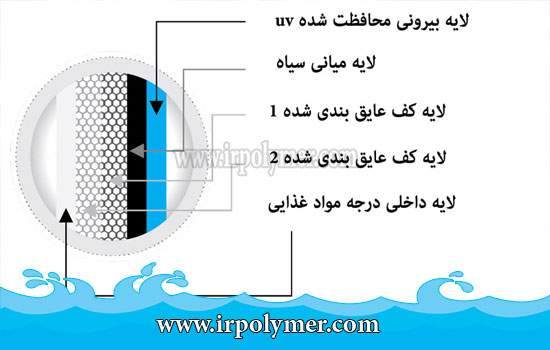Nowadays, the use of plastic water tanks is preferred over traditional all-metal and concrete tanks. However, metal tanks are still used in some cases. Plastic tanks are important due to their unique features such as light weight, excellent strength, reasonable price, easy transportation, and various designs, including book-shaped, under-stairs, etc.
To prevent the growth of algae and bacteria, two and three-layer tanks should be used. This is because the middle layer, which is black, prevents sunlight from entering, which in turn prevents the creation and growth of algae. However, in very cold or hot regions, using only anti-algae tanks is not sufficient. Therefore, insulated tanks are necessary to prevent the liquid inside the tank from freezing in extreme cold and to prevent significant heat transfer into the tank in extreme heat. Excessive heat is also a factor that promotes algae growth and sediment formation.
Thus, in these conditions, using four-layer and five-layer polyethylene tanks is essential. These tanks have a foam layer that prevents the transfer of external environmental heat into the tank. Depending on the conditions, if the hot or cold weather is extremely severe, the number of layers should be more, i.e., five layers; otherwise, four layers are sufficient. The function and mechanism of the foam with its cellular structure and hollow, light space reduce heat transfer, preventing extreme heat and cold from penetrating the tank. It is evident that four and five-layer tanks are more expensive than tanks with fewer layers due to the presence of foam. This is because the production, design process, and raw materials for making these types of tanks are more extensive.

